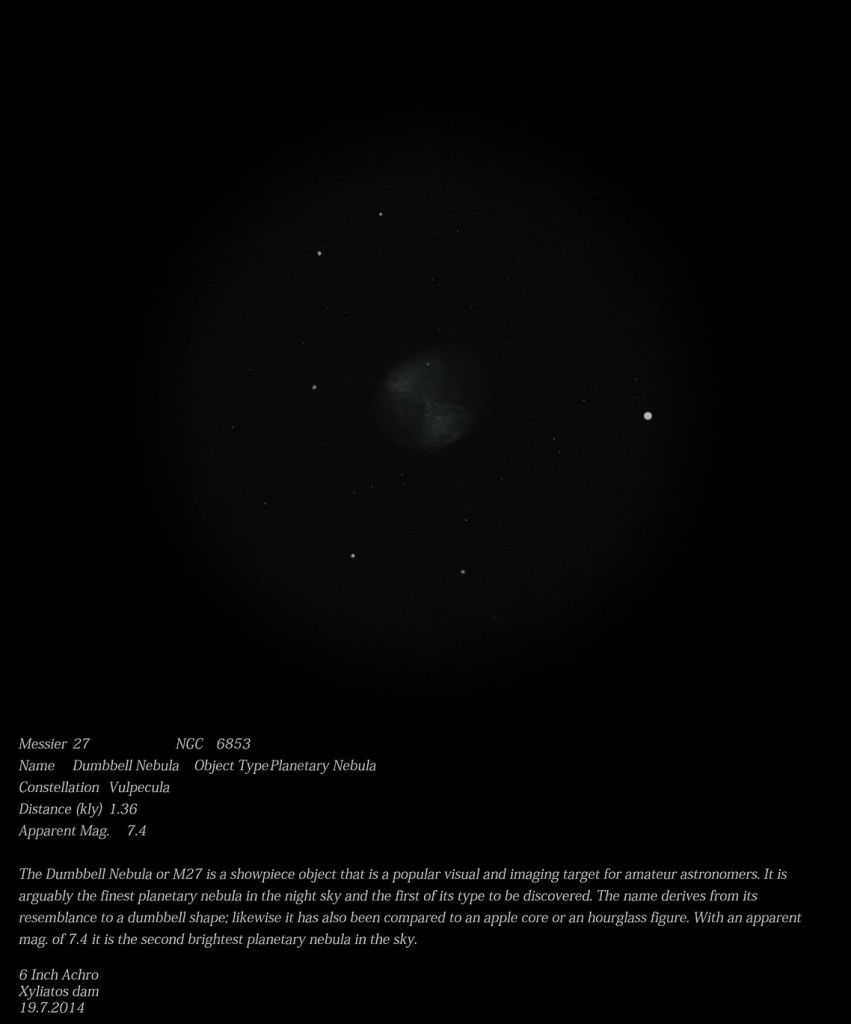
Object Name M27
Object Type (Planetary)
Location (Xyliatos Dam)
Date (19.7.2014)
Media (graphite pencil)
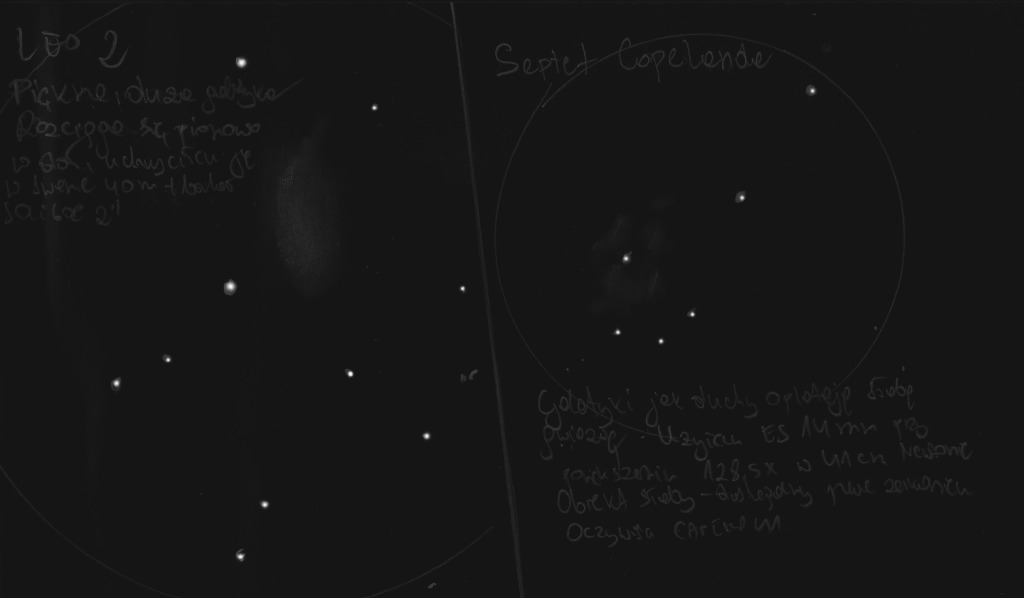
Object Name: Leo II and Copeland’s Septet
Object Type (Galaxies)
Location (Nienawiszcz, Poland)
Date (05-may-2014)
Equipment: Newtonian telescope 409/1800 (Capella 41), WO SWAN 40mm, ES 14mm eyepiece , Soligor Barlow 2X
Object: – Artist: Robert Twarogal (Ignisdei)
Night from Saturday to Sunday (3-4 May 2014) was beautiful. The observation started at 22.00. Near the Star „Gamma Leo” I found a spectacular Leo II (dwarf spheroidal galaxy UGC 6253 ( distance from Earth of 750 thousand light-years.) Galaxy Leo II was discovered in 1950 by Robert Harrington and Albert Wilson under the Palomar Observatory Sky Survey. Leo II belong to the our Local Group, and is a satellite of the Milky Way. Beautiful large, galaxy, „rather” visible in 41cm mirror + Swan 40mm and Soligor Barlow 2X
Then with some dose of skepticism I began to search a Copeland’s Septet (Hickson 57)
This is a close gropup of seven galaxies that lies about 480 million light-years away in Leo, discovered by Ralph Copeland in 1874. An apparent magnitudes of them: between 13.6 and 15.2, it was hard to divide, They are very faint even in Newtonian 16” + ES 14 mm in power 128X.
Yours Robert
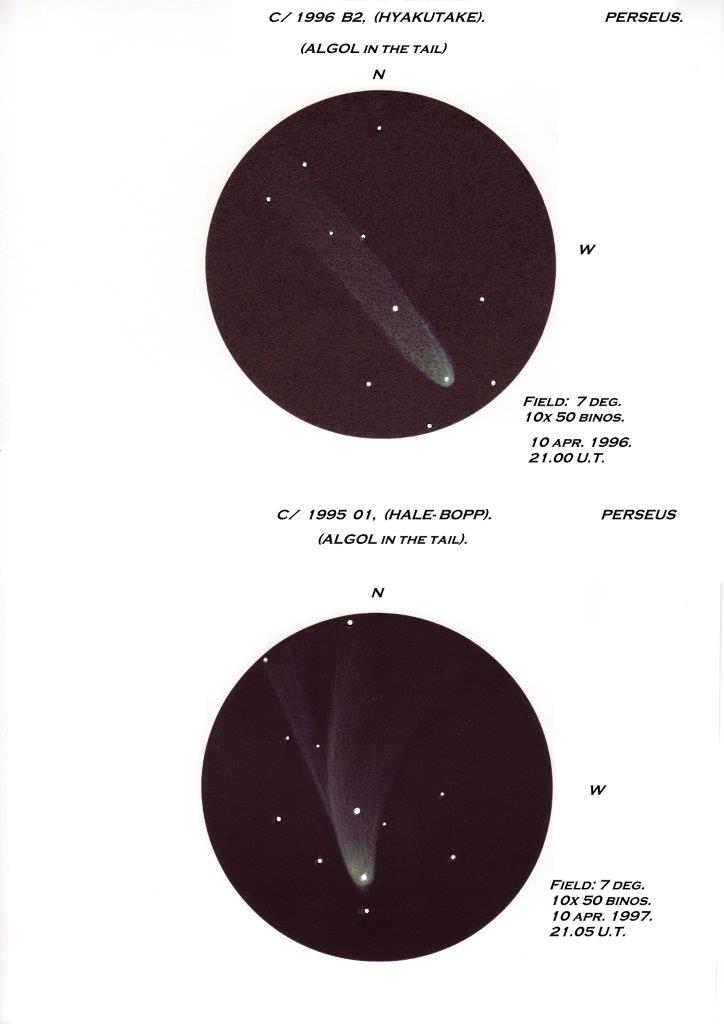
Hey ASOD!
This is not often to see on the sky, two comet-tails with the star ALGOL
in the middle of them!!
The observations were made one year apart, but both at 10 apr. 21.00U.T.!
More info on my sketches! I hope you all enjoy the observations.
Both sketches were made with waterbased color- crayons on black paper.
Loc.: Trondheim, Norway.
Thank you for comments, and have a nice time under the stars!
Best from Per-Jonny Bremseth.

Hi ASOD community last month to observe this incredible background irregular galaxy is weak but not enough to be spooky. A striking detail is to visualize the light concentration from north to south, with the odd within this park. All the more weak and irregular with a grainy appearance of faint stars that come and go, some of them more clear and stable outer layer.
I was very pleased with what you see through the eyepiece, not expecting much of this beautiful galaxy.
Best Regards.
Roberto.
Object name: NGC 6822
Object type: Galaxy
Location: Arroba de los montes Ciudad Real ( spain )
Date: 27 June 2014
Hour: 03:20 < 04:00
Media: Graphite pencil, processed and inverted gimp 2.8
Optical equipment: Dobsonian telescope Meade Lightbridge 10'' F/5 Eye piece Ethos 13mm
Magnification 97x True field 1°
Sky conditions: Calm wind, transparency 4/5 Seeing 3/5. Temperature 11,1°C / RH 62% SQM 21,56
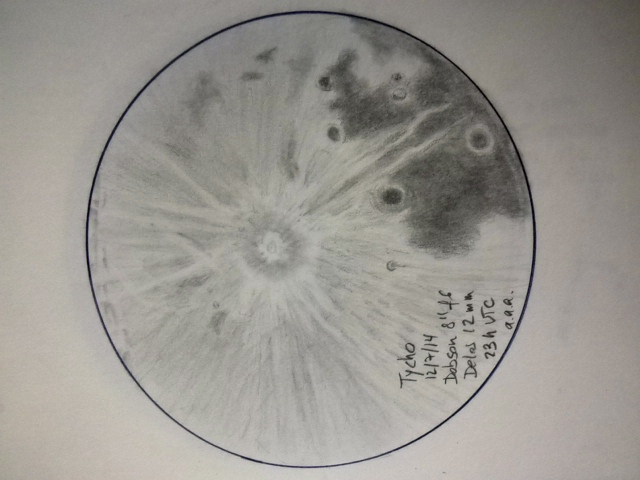
Moon Crater Tycho
Telescope: 8″ f6, reflector on Dobson Mount
Eyepiece: Delos 12mm
Made July 12th 2014 at 23h UTC
The most visible item on full moon.
Aurelio Alcalde
Normalmente en: lat: 40º 27′ 21” N, long: 3º 38′ 50” W
Ocasionalmente en: lat: 40º 05′ 58” N, long: 5º 47′ 05” W
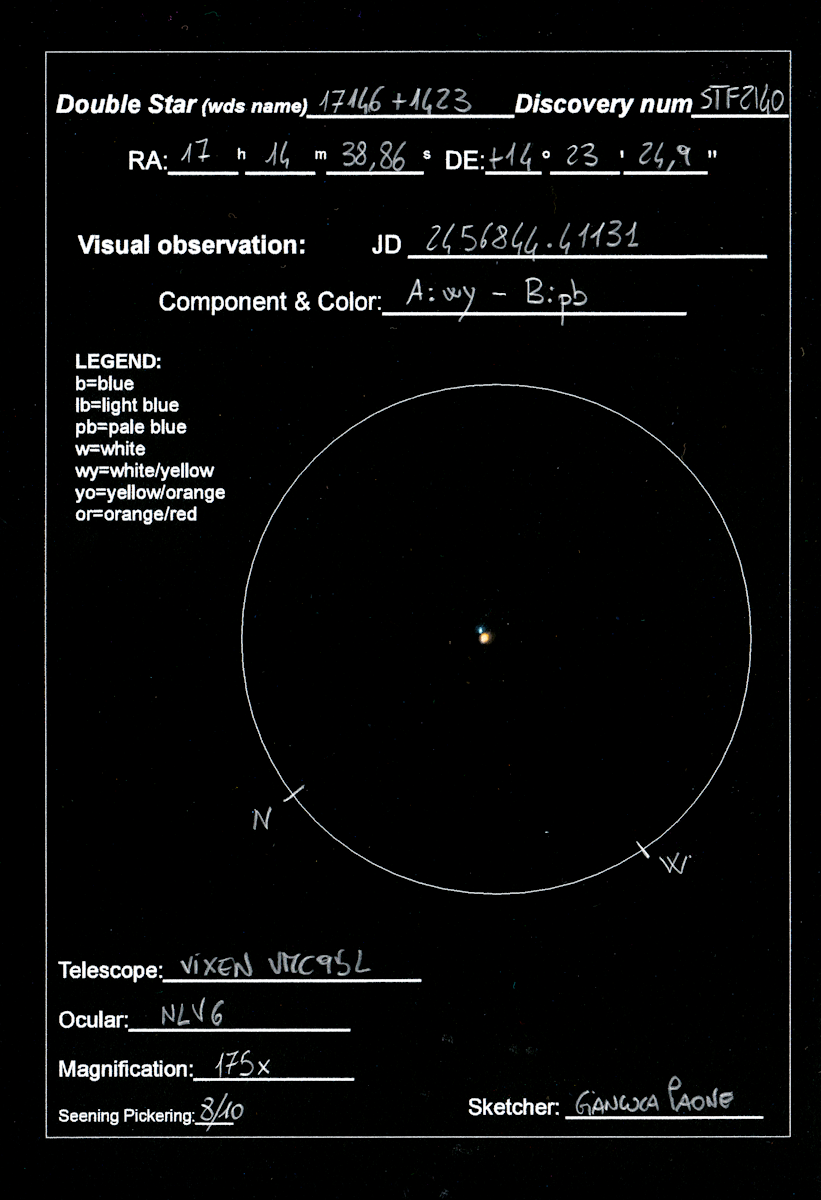
Object name:STF2140
Object type: double stars
Location: Subiaco (IT) – 13 04 40.5E, 41 55 35.9N
Date: 2014-07-05
Media: graphite pencil & pastel
Equipment: 95mm VMC
—
Gianluca Paone
Astronomia Sotto il Lampione – Forum
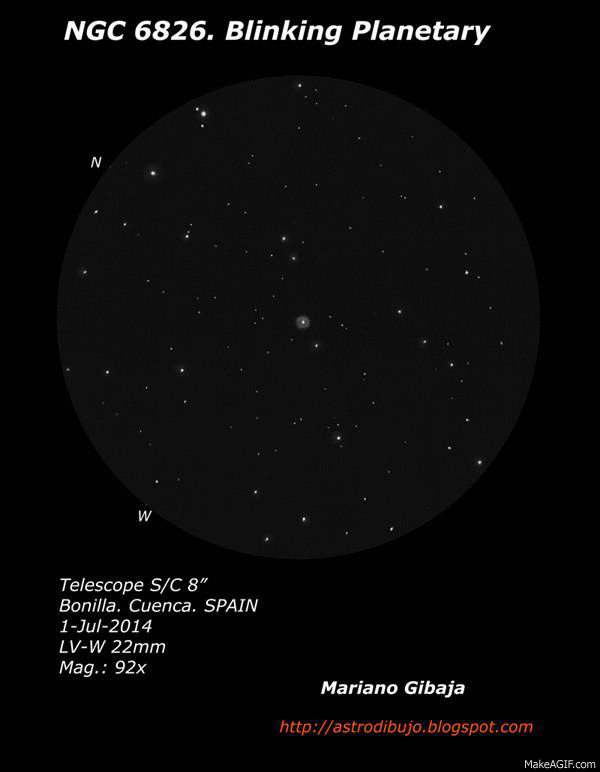
Object Name: NGC 6926. Caldwell 15..
RA: 19h 49m 48.0s; Dec: +50° 31′ 31 ”
Magnitude: 8.8
Object size: 27″x 24″
Distance: 2,000 light years approx.
Constellation: Cygnus
Type: Planetary Nebula
Description: PN, D, L, R, * 11M.
Location: Bonilla. Cuenca. Spain.
Date: July 1, 2014.
Time: 01:20 UT.
Material used: graphite pencils on white paper. Image processed with Photoshop. Converted into animated gif using two images.
Celestron Telescope S/C 8″ Mount Cgt-5
Eyepiece: LV-M 22mm; Magnification: 92x.
Condition: NEML: 5’91 (Zone 14 Cygnus). Temperature: 14°. Calm wind.
More information: http://astrodibujo.blogspot..com.es/

Hey ASOD!
This time I send you the beautiful trio iota Cassiopeiae.
The stars shows fine colors! More info on my sketch.
I used pencils on white paper, inverted and colored in “Paint”.
Loc.: Trondheim, Norway.
Best wishes and clear sky from Per-Jonny Bremseth.